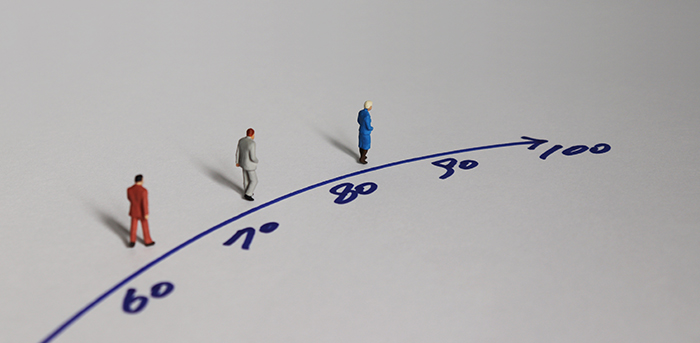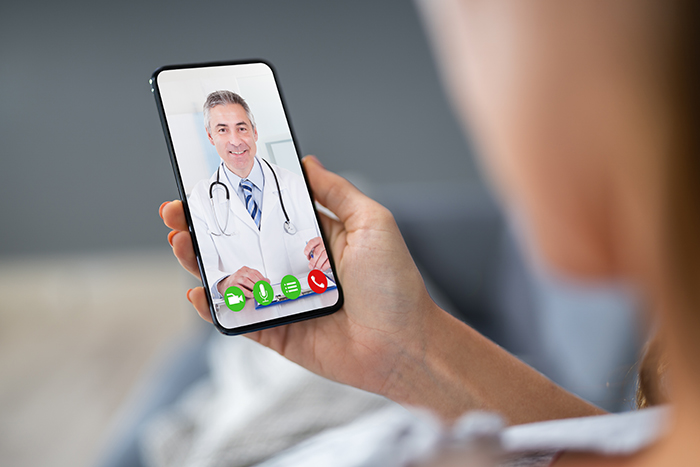The model of healthcare is being shifted by digital
At this year’s virtual CES show, Aloha Mcbride, Global Health Consulting Leader, Ernst & Young (EY), took a closer look at how next-generation technologies are transforming the health sector.
As we all know, healthcare is just one industry that is undergoing enormous and rapid change – not least due to the ongoing coronavirus pandemic. Mcbride kicked-off her address at CES by highlighting five key forces at work that are changing the way our traditional healthcare systems are working, primarily enabled by the shift to digital.
First and foremost, healthcare is becoming extremely expensive – we have an escalating number of individuals with chronic diseases, and an ageing population that is growing rapidly. The World Economic Forum estimates that chronic non-communicable diseases will cost the world around $30tn by 2030, and the number of people on the planet aged 60 or over will be two billion by 2050.
In addition, health disparities in access and quality of care are being exhibited around the globe. And these disparities are creating unhealthier populations, impacting growth and prosperity in our economies, and are ultimately leading to less well-being in the world. Racism, income inequality, location, and illiteracy, are some of the major variables in this health equity equation that must be addressed quickly.
Data shows that life expectancy is 62 years in low-income countries, compared to 81 in high-income countries. The World Health Organisation (WHO) estimates that in London, if you travel east on the London Underground from Westminster, life expectancy declines by one year per stop, as you travel to economically less well-off areas of the city!

Above: the number of people on the planet aged 60 or over will be two billion by 2050
Thirdly there are inefficiencies in healthcare that has led to an increase in waste. Moving away from manual processing through technology automation and other means will offer the opportunity to really drive those costs out.
There is also a steadily shifting power base within healthcare, towards the customer. Consumers are demanding a more personalised, unique digital experience for their health requirements, in much the same way as they do in other sectors. For example, an EY survey showed that 55% of consumers are open to telemedicine consultations replacing in-person for acute and non-acute care.
The fifth spoke in this wheel of change within healthcare is that technology is rapidly innovating at a pace that is also allowing consumers to have greater affordability in those technologies, and many of EY’s key stakeholders around the globe are looking at technology as a way forward to drive better outcomes in healthcare.
Tech focus
Mcbride then delved deeper into that technology component and looked at some of the foundational technologies within healthcare that are really forcing the sector into a period of true innovation.
She commented: “It’s important to consider that the foundational elements of all of these technologies are driving data flow, and the ability to use that data in smart ways to create personalised, efficient, seamless, and effective care outcomes for our patients.
“So, when we think about virtual health, AI, and IoT working together, we’re finding situations where, instead of being confined to a clinical space, we’re able to deliver care anywhere and really move that care into the home when it is critically necessary.”
We’ve also seen the advent of cloud and platforms that are providing a method of consolidating vast amounts of information and data. This can be done from within the hospital setting, and beyond – providing data on for example, the environment in the given location of a patient, the time and date of the next scheduled appointment, or even how many times an orthopaedic surgeon has performed a given procedure in the last six months.
“Utilising this data, along with AI, is really helping us to drive major insights in care, and that includes helping us to really understand the risks of health in our populations - becoming more predictive and preventative and the way in which we provide care, as well as helping us to remove those manual processes that are so costly,” added Mcbride.
What will those smart health ecosystems do?
Around the globe, we are beginning to see great speed, innovation and progress in the advancement of smart health. Much like there are five key driving forces which are proving the catalyst for change within healthcare, Mcbride added that the health entities themselves are striving to embrace and embody five core principles at the heart of this paradigm shift.
The first is hyper connectivity, where systems are connecting everyone and everything to really enable data flow and drive the ability to use innovative technologies. “We see lots of health systems beginning to use cloud platforms to connect data, people and things,” she added.
“Microsoft 365 has been used across the US for example, to enable more virtual care and clinical documentation to be more easily executed, an increase in personalised care pathways and to drive insights and clinical decision making. I think with Microsoft Cloud for Healthcare we’re going to see more health entities moving in this direction.”
The second principle is intelligence. Health entities are really starting to think about how to embed logic and AI into everything they are doing, so that all of their processes are smart - enabling them to tailor the healthcare experience for their patients.
Mcbride added: “When you think about ‘intelligence’ as a core principle, we’re seeing lots of entities think through how they can embed AI into their transaction processing, enabling more intelligence and a more personalised way of working, between clinicians and patients.
“As an example, there is a hospital in the Netherlands that is using AI to interpret lab results, radiological images and patient data. This includes data drawn from medical-grade wearable devices that provide a longitudinal record of vitals and other heath data.”

Above: an EY survey showed that 55% of consumers are open to telemedicine consultations replacing in-person
Health institutions are putting the patient at the heart of health service design - oriented around making that experience with care personal, convenient and seamless. In order to achieve this these institutions are employing human centred design techniques, driving a degree of empathy and trust in the way in which their care is delivered across different venues of care.
“We see this concept of human centred design in a couple of different ways,” Mcbride added. “We see it every day in the way in which people are laying out care pathways and journeys for their patients. We also see it being used heavily in the way in which people are designing new health facilities, both virtual and physical.
“In the US, a relatively new hospital took this concept the extra mile by enabling an almost self-service model within their inpatient room setting. An individual patient can select the temperature of their room, control the lighting and the shades, order their meals, and even order different therapies such as massage and art - truly changing the patient experience.”
In addition, there has been a focus on high reliability, and removing medical errors to create a zero-harm environment. This means that many healthcare institutions have become relentless in removing unwarranted variation from the care pathway, while remaining open and encouraging mindful innovation based on evidence-driven clinical practice.
Mcbride continued: “We have lots of entities that are focused on zero-harm and using AI to find where that harm may lie within their datasets, but we also see hospital systems being designed for high reliability. A hospital in Hong Kong that is due to open this year, will be using AI, WiFi, IoT, and RFID to digitise their supply chain, so that they know they have the right supplies, at the right time, for the right procedure, for the right patient. They’ve also started using this for medication management to reduce medication error.”
The final principle is sustainability – from two perspectives. Firstly, from an environmental standpoint, and secondly, from that of technology. Environmentally, health entities are creating care pathways that enable the health system to clinically deliver care in a financially sustainable way, and in a way that also supports their workforce, patients and community.
From a technology standpoint, they are thinking about how they procure systems, and how those systems can scale - to be agile, modular, and most importantly, be interoperable. And of course, they are looking for investments that help future-proof their current environment.
“In an example from Australia, a cancer centre has started from the ground up and thought through how and why they were going to be using certain materials, and design concepts, and integrated this concept of a healing environment that was based on core principles and evidence-based design,” continued Mcbride.
“This meant introducing elements like natural light and fresh air, a view of a garden scene, and water management, and then ensuring that the materials they were using were mostly recycled with low emissions.”
Embarking on a smart health transformation journey
Mcbride added that EY’s most frequent method used when working with hospital systems around the world is the ‘Future Back’ approach – beginning with a roadmap over three to four years, and an analysis of what the health system might look like in that time - understanding what changes might occur across the entire dynamics of the health journey.
“We’ll then look at today’s environment, but from outside the health entity - understanding where the best practices are, how they’re being executed, and what kind of technology is being used,” she added. “We’ll then take that information and apply that to the capabilities of the health entity, where it is from a maturity standpoint, and where the quick wins might be. Then it’s about integrating all of that information into transformational design and execution.”

Above: around the globe, we are beginning to see great speed, innovation and progress in the advancement of smart health
One of the factors that Mcbride really encourages health systems to think about is utilising MVPs through every step of the ‘Future Back’ process - that really helps to not only refine the vision of where the health entity wants to go, but it also helps to test technical feasibility and viability of the new technology being suggested.
“You also need to think through how you’re going to ensure that the technologies are future-proof,” she continued. “And how you need to procure and create contracts with your technology partners that enable you to ensure that these products are scalable, interoperable, agile and are going to allow you to move into new ways of delivering care as technology innovation and new ways of working come about - just as we’ve all experienced with COVID. These are critically important to avoid making investments that you’re stuck with that aren’t going to be moving forward with you in your healthcare ecosystem.
“Lastly, you need to think about the kind of operating model and culture that’s critical to enabling an intelligent health system. We know that we have to think through how to become an attractive ecosystem partner. And that’s a new concept for some of our health entities, and it’s something that needs to be done carefully. When done correctly, you can become a highly attractive partner to collaborate and invest with, and to really accelerate your healthcare journey.”


